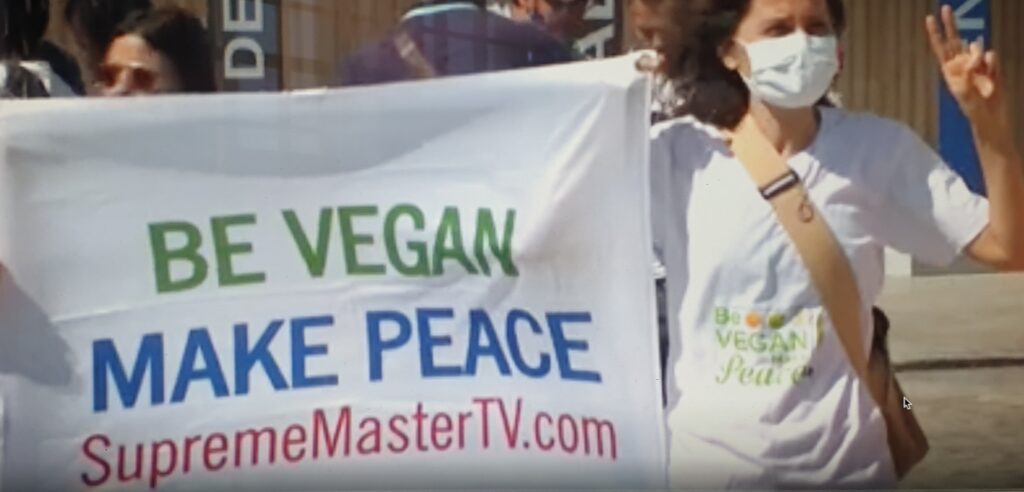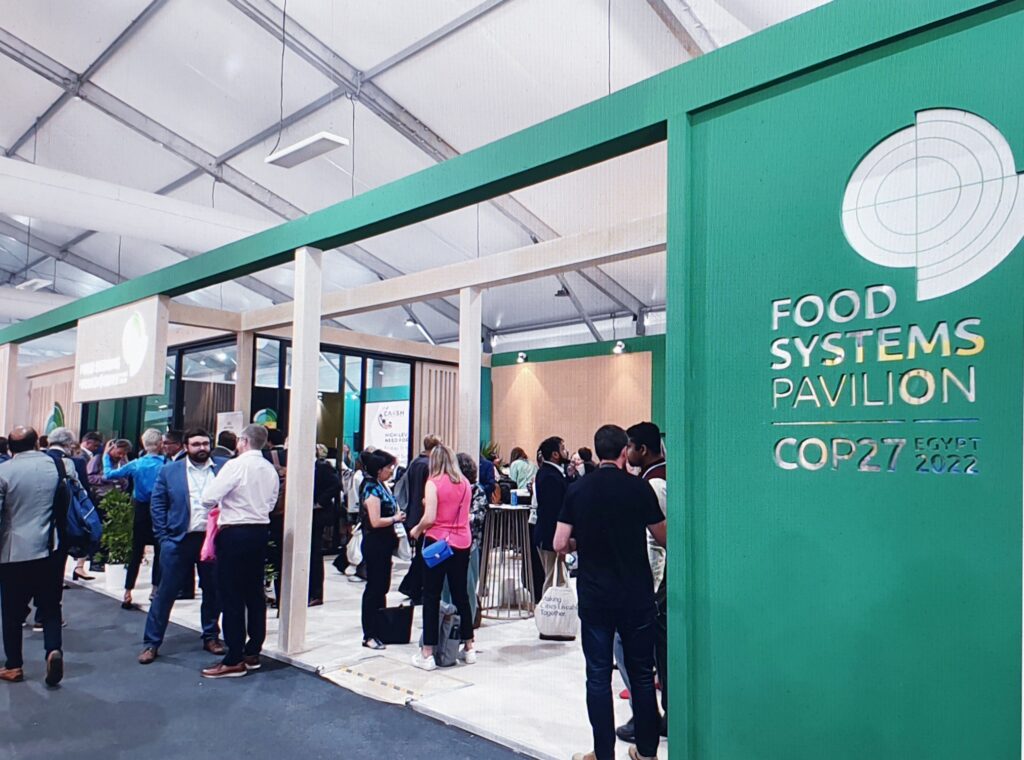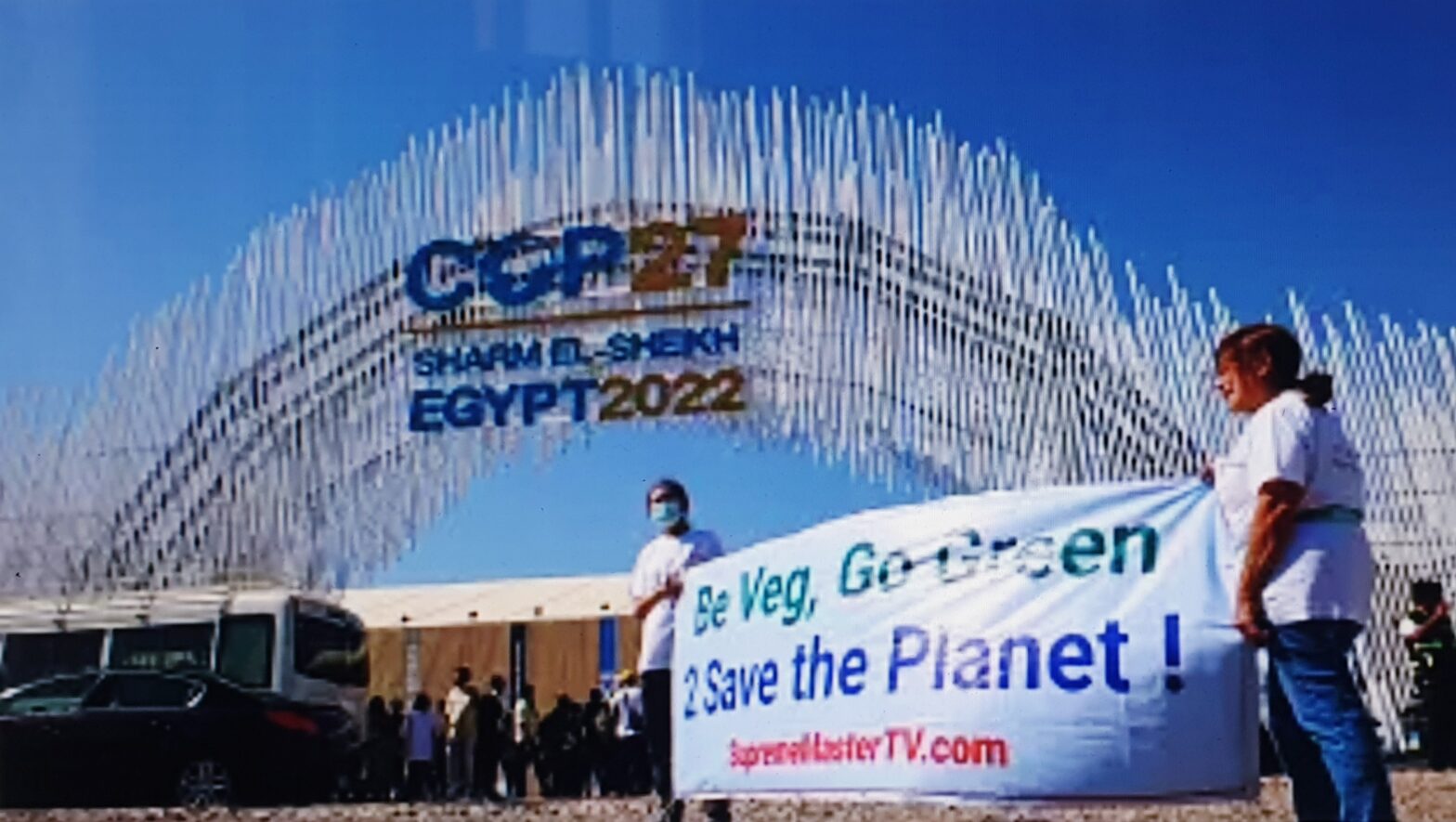Just a month or so back, a friend asked me in jest if he could get carbon credits by not drinking beer. His argument was that he was saving on the CO2 that would have otherwise escaped as burps by not drinking beer!
If the reduction of cow burp (god bless them!) could earn credits, he felt he should be rewarded as well. Naturally, I was amused by the query, but it did raise an interesting point — eating (or, in this case, burping) choices have a major impact on climate change.

Recently, at COP27, the point resurfaced as I saw a demonstration asking people to go vegan. The demonstrators emphasised that more than a third of global greenhouse gas emissions came from food production, distribution, and consumption. [1]
Walking through the pavilions of COP27, I spotted ‘The Food Systems Pavilion’. I was informed that it was the first time at a COP there was a dedicated food and agriculture pavilion. One of the days at COP27 was themed “Adapt or Starve” to discuss the vital issues of adaptation, agriculture and food systems. The COP27 Egyptian Presidency launched a new initiative, Food and Agriculture for Sustainable Transformation or FAST, to improve the quantity and quality of climate finance contributions to transform agriculture and food systems by 2030. (It was a finance COP, ok, it can be Food & Finance COP). Although the relationship between food and climate change was not new, there was some reluctance in some quarters to bring this discussion inside COP. But that is set aside now and for good.

All this took me to another conversation I had with a colleague from Norway back in 2004. We were at lunch, and she asked me why many Indians are vegetarian? I replied that if we start eating meat and fish, there won’t be much left for others. She thanked me for being a vegetarian and requested me to remain so.
Our food choice has a lot to do with the environmental impacts. As the population grew and the options and choices of food increased, the environmental impact also multiplied. The chicken population is estimated to be 22.7 billion, and humans consume 65.8 billion chickens yearly. This should make them the top species. Poultry outclasses the top 144 wild bird species combined. In the article ‘Are we living in the age of the chicken?’ David Szondy remarks that the prominent marker of this era will not be the fantastic monuments or industrial revolution, but the sheer number of fossilised bones of hundreds of billions of domestic chickens.[2]
Beef accounts for a quarter of emissions produced by raising and growing food.[3] This paper referred was published in 2021, estimates the climate impact of meat is higher than the UN’s Food and Agricultural Organization, which estimates 14% of all emissions come from meat and dairy production. As per FAO, about 44% of livestock emissions are in the form of methane. The main methane source comes from cattle’s digestive processes and similar fermentative processes in manure.
It is not just meat; rice is also a critical factor in emissions. The same study, which said one-quarter of emissions come from beef, also estimated 12% comes from rice. With a growing population, farmland management and land use changes have become vital sources of emissions. Land that earlier used to be carbon sinks is now deforested and used for agriculture and livestock have become net emitters.
It is ironic that it is the global south that will be impacted both on account of emissions and resulting climate change. While it is the global north is the major GHG emission contributor through food consumption, it is the global south which contributes more through food production. The vulnerability of climate change is also more in the global south as climate change will impact food production. The world’s food security and malnutrition situation will exaggerate due to climate change, if we do not address the adaptation.
The discussion of food and agriculture, like any other climate discussion, will have both the mitigation and adaptation sides. While there is a growing risk of food crisis owing to climate change, it is important that our agricultural systems adapt to the new normal. This requires investments, innovations, and a huge effort in education and capacity building. On the other side, the food we eat has a vast emissions footprint, and we need to reduce that.
Action needs to be on both dimensions, mitigation and adaptation. Mitigation largely depends on the food choices we make and the effort we put into reducing food wastage. Adaptation needs to be addressed through appropriate policy interventions and efficient agricultural practices supported by the capacity enhancement of farmers.
While the governments and inter-governments have started the discussion, we can decide what we eat. We have the power to influence climate change. Avoid food which has a higher carbon footprint. Do not waste food and consume locally produced fresh food.
Buuurp…… My grandmother used to say that burp, while eating, is an indicator to stop eating. I never understood her logic. But can just say, it is time to stop unsustainable food production and consumption.
[1] https://unfoundation.org/blog/post/climate-change-and-the-future-of-food/
[2] https://newatlas.com/age-chicken/57640/
[3] https://www.theguardian.com/environment/2021/sep/13/meat-greenhouses-gases-food-production-study
